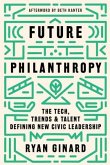Over a million nonprofit organizations, from day-care centers and neighborhood churches to major research universities and metropolitan hospitals, are currently relied upon to deliver an array of essential social services. This is in keeping with a historical conviction that private voluntary action, as opposed to government intervention, should address as many of the nation's social needs as possible. But just how much to rely on the nonprofit sector is the question at the center of a growing debate. Critics challenge the assumption that nonprofit organizations have successfully directed much of their benefits toward the poor and disadvantaged - an assumption that has to date justified favorable tax treatment for donations and nonprofit operations. Who Benefits from the Nonprofit Sector? examines all the major elements of the nonprofit sector - health services, educational and research institutions, religious organizations, social services, arts and cultural organizations, and foundations - describing each institution and its function, and then exploring how their benefits are distributed across various economic classes. The book's findings indicate that while few institutions serve primarily the poor, there is no evidence of a gross distribution of benefits upwards toward the more affluent. The source of an institution's funding is also shown to be an important determinant in how its benefits are distributed. They show, for example, that: . Nonprofit nursing homes and drug treatment centers have a lower concentration of Medicaid patients than their for-profit public counterparts do. Twenty-seven percent of social service agencies serve primarily the poor, and the large majority ofthese received most of their income from the federal government. The effective educational subsidy (i.e., cost of education less tuition) per person at both public and private univenities increases with income. The analysis of this data makes for a book with profound implications for future social and tax policy.








